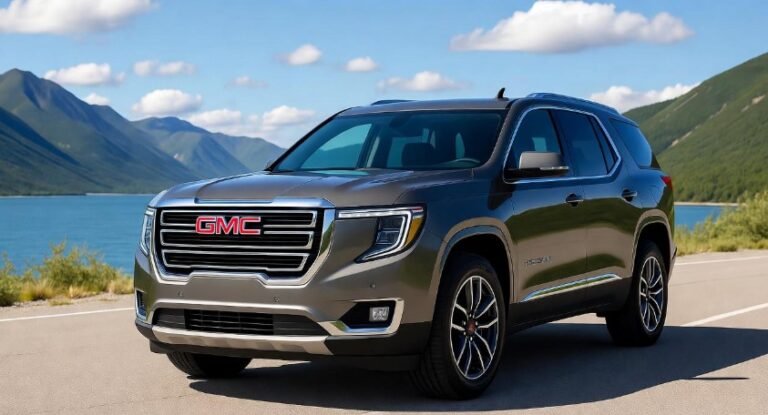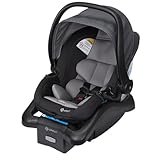Drum Brakes vs Disc Brakes: Which Is Better?

Drum brakes vs disc brakes: Disc brakes offer superior stopping power and heat dissipation, making them generally better for most modern vehicles due to enhanced safety and performance.
Key Takeaways
- Understand braking system basics.
- Disc brakes excel in performance and heat management.
- Drum brakes are cost-effective and durable.
- Disc brakes are standard on most front wheels.
- Maintenance differs between brake types.
- Choose based on vehicle type and driving needs.
You’re behind the wheel, and suddenly you need to stop. The effectiveness of your car’s braking system is paramount for your safety. But have you ever wondered about the different types of brakes and how they work? Understanding “drum brakes vs disc brakes” can seem complicated, but it’s a crucial piece of automotive knowledge. Many drivers aren’t sure which system is superior or why their car might have one type over the other. This guide will break it down in simple terms, demystifying the technology so you can drive with more confidence. We’ll explore how each system functions, their advantages, and their disadvantages, helping you understand what’s best for your vehicle and your peace of mind.
The Heart of Stopping: How Car Brakes Work
Before we dive into the specifics of drum brakes vs disc brakes, let’s quickly review the fundamental principle behind all braking systems. When you press the brake pedal, you activate a hydraulic system. This system uses brake fluid to transfer the force from your foot to the “friction material” on your wheels. This friction material then presses against a rotating surface connected to the wheel, slowing its rotation and ultimately stopping the vehicle. The goal is to convert the kinetic energy (the energy of motion) of your car into heat energy through friction.
Disc Brakes Explained: The Modern Standard
Disc brakes are the most common type of braking system found on the front wheels of most modern passenger vehicles, and often on all four wheels of performance cars and SUVs. They are a testament to automotive engineering, designed for optimal stopping power and reliability.
How Disc Brakes Work
A disc brake system consists of a few key components:
- Rotor: This is a flat, disc-shaped metal component that is attached to the wheel hub and rotates with the wheel.
- Caliper: This is a clamp-like mechanism that houses the brake pads. It’s mounted over the rotor.
- Brake Pads: These are the friction material that presses against the rotor. They are attached to the caliper.
- Piston: Inside the caliper, one or more pistons are pushed outwards by hydraulic pressure when you apply the brakes.
When you press the brake pedal, hydraulic fluid forces the pistons in the caliper to move. These pistons then push the brake pads against the surface of the spinning rotor. The resulting friction creates resistance, slowing down the rotor and, consequently, the wheel and the vehicle.
Advantages of Disc Brakes
Disc brakes offer several significant advantages that have made them the preferred choice for most manufacturers:
- Superior Stopping Power: Disc brakes generally provide more consistent and powerful braking, especially under heavy braking conditions.
- Excellent Heat Dissipation: The open design of disc brakes allows air to flow freely around the rotor, which helps to dissipate heat efficiently. This is crucial because excessive heat can lead to “brake fade,” where the brakes become less effective.
- Better Performance in Wet Conditions: The rotating motion of the rotor and the exposed nature of the brake pads help to “wipe away” water, reducing the impact of wet weather on braking performance.
- Easier Maintenance and Inspection: It’s typically easier to visually inspect the condition of brake pads and rotors on a disc brake system.
- Consistent Performance: They offer more predictable and modulated braking feel.
Disadvantages of Disc Brakes
While highly effective, disc brakes aren’t without their minor drawbacks:
- Higher Cost: Disc brake systems can be more expensive to manufacture and replace than drum brake systems.
- Exposure to Elements: Their open design can make them more susceptible to damage from road debris and corrosion.
- Noise: Sometimes, disc brakes can be noisier than drum brakes, especially when they are worn or when dust and debris accumulate.
Drum Brakes: The Classic Choice
Drum brakes have been around for a long time and were the standard for many years before disc brakes became widespread. They are still found on the rear wheels of many smaller or less performance-oriented vehicles, as well as on some heavy-duty trucks and older classic cars.
How Drum Brakes Work
A drum brake system has a different configuration:
- Brake Drum: This is a hollow, cylindrical metal component that rotates with the wheel.
- Brake Shoes: These are curved, C-shaped pieces of metal lined with friction material. They are housed inside the brake drum.
- Wheel Cylinder: This is a hydraulic cylinder that contains pistons.
- Return Springs: These springs pull the brake shoes back to their resting position when the brake pedal is released.
When you press the brake pedal, hydraulic fluid pushes the pistons in the wheel cylinder outwards. These pistons force the brake shoes to expand outwards, pressing their friction material against the inner surface of the rotating brake drum. This friction slows the drum and the wheel.
Advantages of Drum Brakes
Despite being less advanced, drum brakes offer some distinct benefits:
- Lower Cost: They are generally less expensive to manufacture, making them a cost-effective option for manufacturers.
- Durability and Longevity: The friction material on brake shoes can sometimes last longer than brake pads in disc systems under normal driving conditions.
- Protection from Elements: The drum encloses the brake components, offering better protection from dirt, water, and road debris.
- Effective Parking Brake Integration: Drum brakes often have a built-in mechanism for parking brakes, which can add to their convenience.
Disadvantages of Drum Brakes
The limitations of drum brakes become apparent when compared to disc brakes:
- Inferior Heat Dissipation: The enclosed design traps heat, making them much more prone to brake fade under heavy use.
- Reduced Wet Performance: Water can get trapped inside the drum, significantly reducing braking effectiveness until it’s cleared.
- Less Stopping Power: Generally, drum brakes offer less outright stopping power and modulation compared to disc brakes.
- More Complex Maintenance: Disassembly and reassembly of drum brakes can be more intricate, making inspection and repair more time-consuming.
Drum Brakes vs. Disc Brakes: A Direct Comparison
To better understand the differences, let’s look at a direct comparison of their performance and characteristics.
| Feature | Disc Brakes | Drum Brakes |
|---|---|---|
| Stopping Power | Generally superior, more consistent. | Good for normal use, can fade under heavy load. |
| Heat Dissipation | Excellent due to open design. | Poor, prone to overheating and fade. |
| Performance in Wet Conditions | Better; water is easily expelled. | Worse; water can be trapped, reducing efficiency. |
| Cost | Higher initial and replacement cost. | Lower initial and replacement cost. |
| Maintenance Ease | Easier to inspect and service. | More complex to service. |
| Durability/Longevity | Pad life can vary; rotors are robust. | Shoes can last long, but drums can wear. |
| Protection from Elements | More exposed to dirt and debris. | Better protected by the drum housing. |
| Typical Application | Front wheels on most cars; all wheels on performance vehicles. | Rear wheels on some cars; older vehicles; heavy-duty applications. |
Why Your Car Has a Specific Brake Type
Modern vehicles often use a combination of brake types. The most common setup is disc brakes on the front wheels and drum brakes on the rear wheels of standard passenger cars. This configuration is a balance of cost and performance.
The front wheels bear a larger portion of the vehicle’s weight during braking (as much as 70-80%). Therefore, they require the most effective braking. Disc brakes, with their superior stopping power and heat dissipation, are ideal for this role. The rear wheels assist in braking, and for many everyday driving scenarios, drum brakes are adequate and more cost-effective.
Performance vehicles, sports cars, and SUVs designed for heavier loads or high-speed driving typically have disc brakes on all four wheels. This ensures maximum stopping capability and consistent performance under all conditions. You can often see the rotors and calipers of disc brakes through the spokes of the wheels, a visual cue to their advanced braking technology.
Maintaining Your Brakes: Tips for Both Systems
Regardless of whether you have drum brakes, disc brakes, or a combination, proper maintenance is essential for safety.
General Brake Maintenance Tips
- Regular Inspections: Have your brakes inspected by a qualified mechanic at least once a year, or as recommended in your owner’s manual.
- Listen for Noises: Squealing, grinding, or clicking sounds when braking are usually indicators of worn brake pads, rotors, or other issues.
- Check the Brake Fluid: Ensure your brake fluid is at the proper level and is clean. Old or contaminated brake fluid can compromise braking performance. The National Highway Traffic Safety Administration (NHTSA) provides resources on brake system maintenance and safety.
- Feel the Pedal: Pay attention to how your brake pedal feels. A spongy or soft pedal can indicate air in the brake lines or a leak. A pedal that sinks to the floor is a serious problem.
Specific Maintenance for Disc Brakes
- Pad Wear: Brake pads have wear indicators that will often create a high-pitched squeal when they are low.
- Rotor Condition: Inspect rotors for deep scoring, cracks, or warping.
Specific Maintenance for Drum Brakes
- Shoe Wear: Inspecting shoes usually requires removing the drum.
- Drum Condition: Check drums for excessive wear or damage.
- Springs and Hardware: Ensure all return springs and hardware are in good working order.
Pro Tip:
Always use high-quality brake components from reputable manufacturers when replacing brake parts. The safety of your vehicle depends on it.
Drum Brakes vs Disc Brakes: Which is Better for You?
The question of “drum brakes vs disc brakes: which is better?” doesn’t have a single, universal answer. It depends on the vehicle, its intended use, and your driving priorities.
For Everyday Commuting and Standard Driving
For most typical driving scenarios on American roads—commuting, running errands, highway cruising—a standard system with front disc brakes and rear drum brakes is perfectly adequate. It offers a good balance of safety, performance, and affordability.
For Performance and Safety Enthusiasts
If you drive a performance vehicle, live in a hilly or mountainous area, frequently tow, or simply prioritize the highest level of safety and stopping power, then four-wheel disc brakes are undeniably superior. Their ability to handle heat and provide consistent, strong braking is unmatched.
For Older Vehicles and Classic Cars
If you own a vintage vehicle, it likely came equipped with drum brakes. While functional for its era, many enthusiasts opt to upgrade to disc brakes for improved safety and driving experience. Resources like Classic Auto Parts can offer conversion kits and advice for such projects.
Frequently Asked Questions (FAQ) about Drum Brakes vs. Disc Brakes
Q1: Can I convert my car from drum brakes to disc brakes?
Yes, in many cases. Conversion kits are available for a wide range of vehicles. This is often a popular upgrade for classic cars and older vehicles to significantly improve braking performance and safety. It’s a project best suited for experienced mechanics or those with a good understanding of automotive systems.
Q2: How often should brake pads and shoes be replaced?
This varies greatly depending on driving habits, the type of brake pads/shoes, and the vehicle. Generally, brake pads on disc brakes might last between 25,000 to 70,000 miles, while drum brake shoes can last longer, perhaps 50,000 to 100,000 miles. However, it’s crucial to have them inspected regularly, as they can wear out much faster under hard braking or aggressive driving.
Q3: What does “brake fade” mean?
Brake fade occurs when brakes lose effectiveness due to overheating. When brake components get extremely hot, the friction material can become glazed or gas can be released, reducing the contact between the pad/shoe and the rotor/drum. This is why disc brakes, with better heat dissipation, are favoured for performance applications.
Q4: Are drum brakes bad?
No, drum brakes are not inherently “bad.” They are a reliable and cost-effective braking solution for many applications, especially for the rear wheels of passenger cars where braking demands are less extreme. They were the standard for decades and are still perfectly safe when properly maintained and used within their design parameters.
Q5: Why do front brakes do most of the stopping?
When you brake, the vehicle’s momentum causes its front end to dip down, transferring more weight to the front wheels. This increased load allows the front tires to generate more grip, enabling them to handle a greater portion of the braking force more effectively and safely.
Q6: How do I know if my brakes need servicing?
Listen for unusual noises like squealing or grinding, feel for vibrations in the brake pedal or steering wheel, notice if your car pulls to one side when braking, or if the brake pedal feels spongy or goes too low. Any of these signs warrant an immediate brake inspection.
Conclusion: Informed Driving Starts with Informed Choices
Understanding the differences between drum brakes and disc brakes empowers you as a car owner. While disc brakes generally offer superior performance, especially in demanding situations, drum brakes remain a viable and cost-effective option for many vehicles. The most common setup, front discs and rear drums, provides a well-balanced solution for everyday driving across the USA. Regardless of your vehicle’s brake type, regular maintenance and attention to its performance are key to ensuring your safety on the road. By staying informed, you can drive with greater confidence, knowing your vehicle is equipped to stop when you need it to.





